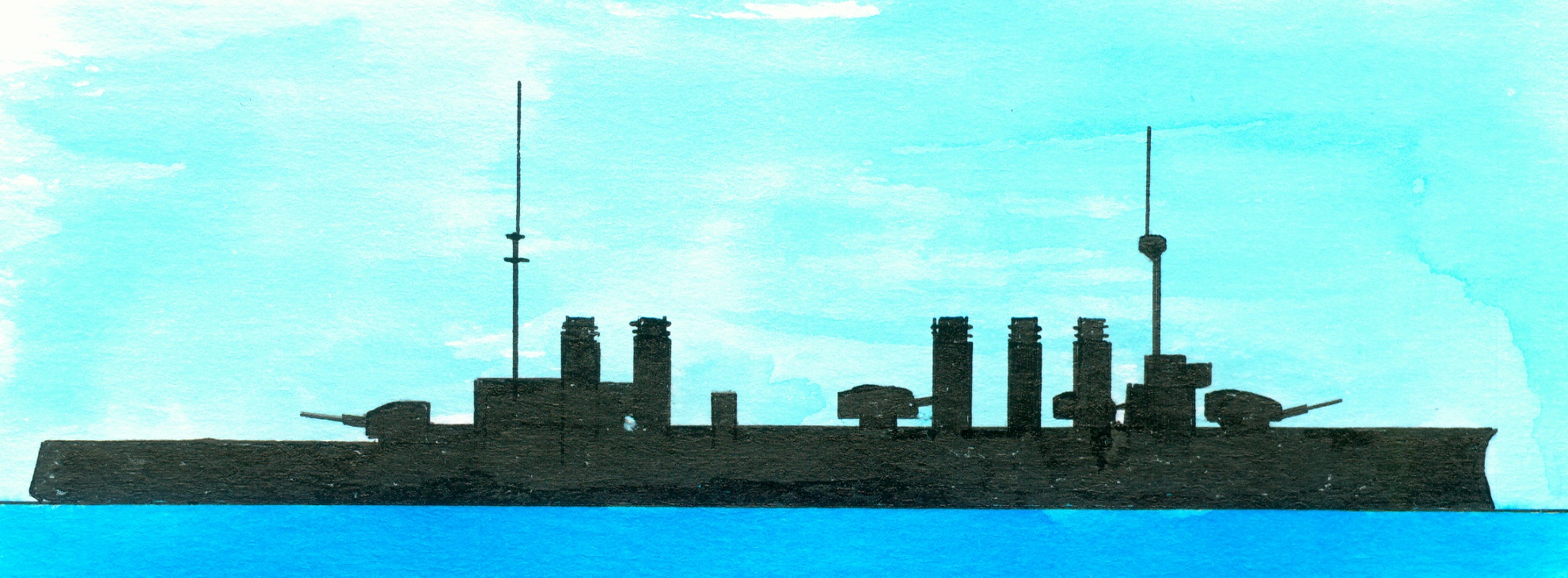computer line drawing made by Alexander van Maanen
Danton-class
Photo made by Marius Bar (1862-1930). Photographed in Histoire de la Marine française illustrée, Larousse, 1934. http://en.wikipedia.org/wiki/File:Danton-Marius_Bar-img_3137.jpg
The newspaper reported again what happened during the launching of the Danton (1) at Brest or better said the failure to do so. According to some rumours was the launching sabotaged, according to official tidings was the failure caused by a defected slipway. The correspondent of the newspaper Matin wrote that between 15.15 and nearly 16.00 o’clock around 50 labourers which should remove the stays were instead of singing roaring the Internationale and the Hymne ( l’anarchie. The spectators which were watching the launching were shocked of this behaviour. If the launching was sabotaged was only to be judged after the ship left the slope. Some dozens large nails thrown under the keel would be enough to prevent the gliding. The Revolutionary newspapers reacted all ready days before the event. The newspaper Cri du Peuple wondered just like other papers if the Danton was willing the slope. Revolutionaries and anarchists said to the journalist of the Matin that the launching would fail. The edition dated Tuesday 25 May reported that it was not sabotage just problems with the yard facilities.
The launching was also reported in other Dutch newspapers. Het nieuws van den dag: kleine courant dated Monday 24 May. In a item wrote the journalist that the Danton which was the 4th dreadnought of the French navy and with a displacement of 18,000 tons to be launched on Saturday 22 May. All was done to make a feast for everyone, present were civilian and military authorities, the nobility, common people, tribunes, soldiers, sailors, brass bands and so on. While the band played the national hymn started the launching slowly and majestic and stopped after 60 metres. What ever men did, she refused any further and was now lying with the bow in the water and the rest of the hull on land. It was feared that it would take 4 or 5 days before the launching was completed.
The Nieuwe Tilburgsche Courant dated 26 May even supplied more details. She all ready glided from the slipway over a distance of about 44 metres when she suddenly stopped. She was unmovable even when two thus tried to tow her loose. Several French newspapers suggested that this failure was caused by the spit of anarchy within the French navy and sabotage. The Saturday edition of the socialistic newspaper Egalité was all ready suggested that the launching would be failed with labourers singing anarchistic songs. Present during the event was the secretary general of the labour exchanger which was removed from the site by the gendarmes.
The Rotterdamsch Nieuwsblad daily edition dated 8 June wrote that the commission ordered by the minister to investigate what went wrong reported that it was necessary to prepare the launching from the beginning make a new launching possible in September, costs 500,000 francs.
Note
1. Ordered conform the 1906 program was she laid down on 3 February 1908 at the yard at Brest, finally launched on 4 July 1909, commissioned on 1 June two years and sunk by the German submarine U-64 on 19 March 1917. The Rotterdamsch Nieuwsblad dated 22 April reported that the French newspaper Petit Parisien received a tiding from the Brest that the Navy Prefect De la Peyri(re was negotiating with the Russian navy liaison officer if it was possible that the Russian czar was present at the launching on 2 May. The Royal Colours she was flying is due to her presence during the coronation of the British king George V on Tuesday 12 December 1911. Late 2007 was her wreck found on the location with as coordinates 38°45'35” North and 8°3'30” East at a depth of over one kilometre. With a displacement of 18,318 metric tons/18,029 long tons (standard)-19,763 metric tons/19,451 long tons (full load) were her dimensions 114,9 x 25,8 x 9,2 metres or 475’5” x 84’8” x 30’2”. The Parsons turbines and 26 boilers supplied 22,500 hp allowing a speed if 19,2 knots with a coal bunker capacity of 920/2,010 tons. The Naval Annual of 1913 reported that she had a crew of 690 men while other sources claimed a maximum number of 023 men. According to the annual were her building costs 2,068,000 British pound. Her speed was 20.18 knots. The armament consisted of 2x2-30,5cm (12”) guns, 6x2-24cm (9.4”) guns, 16-7,5cm (12pdr) guns, 8-10-4,7cm (3pdr) guns, 2-1pdr (in1913) guns and 2-45cm torpedo tubes. The armament consisted of a 27cm (11”) belt, 4,8cm (2”) upper deck and a 4,5cm (2”) lower deck while the main turrets were protected by 30cm (12”) and the secondary turrets by 20cm (8”) thick armour. The annual said a 7-11” thick belt, 2¾”thick deck while the side above the belt was protected by 8”, the main armament by 12” and the secondary by 6”.




